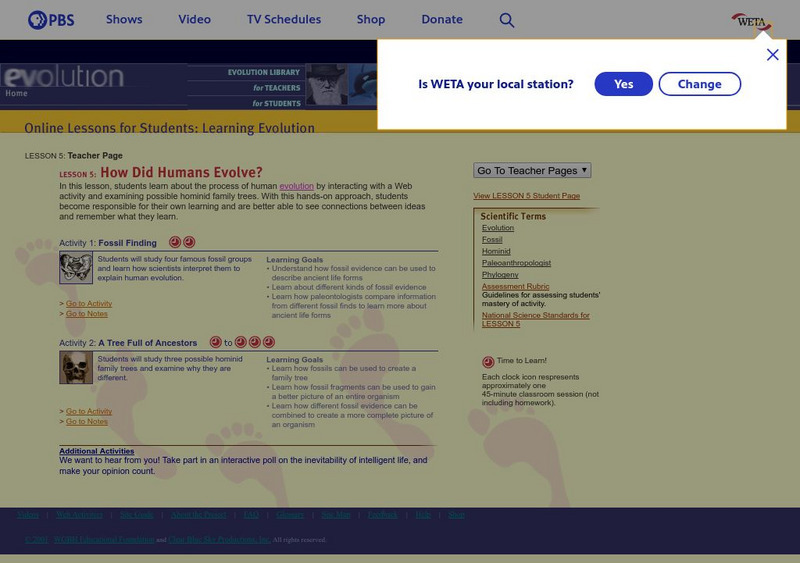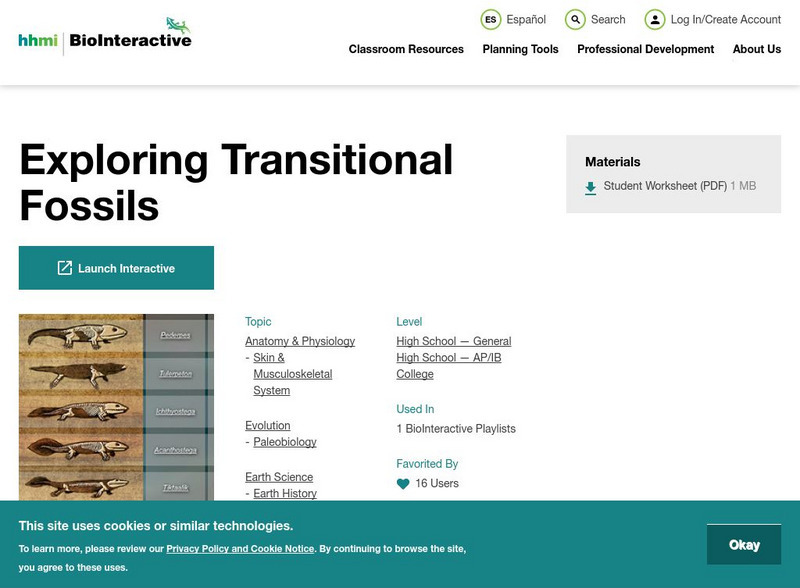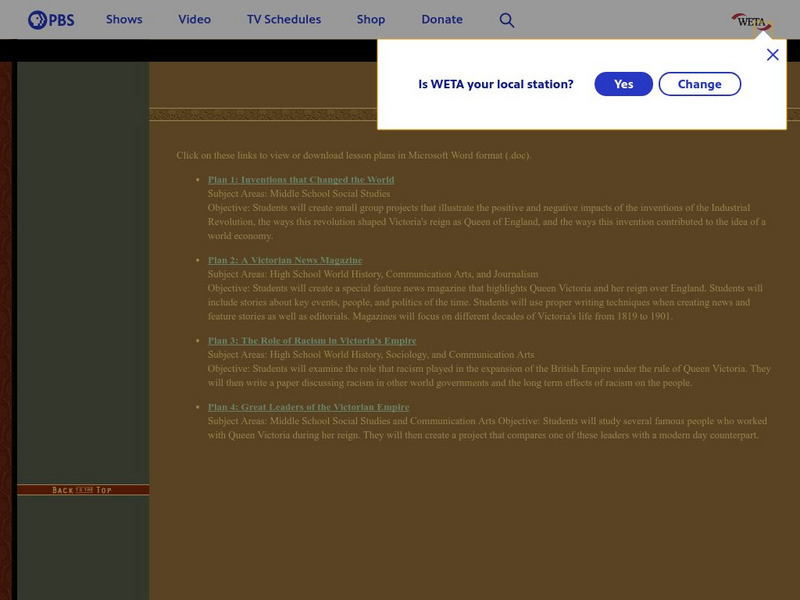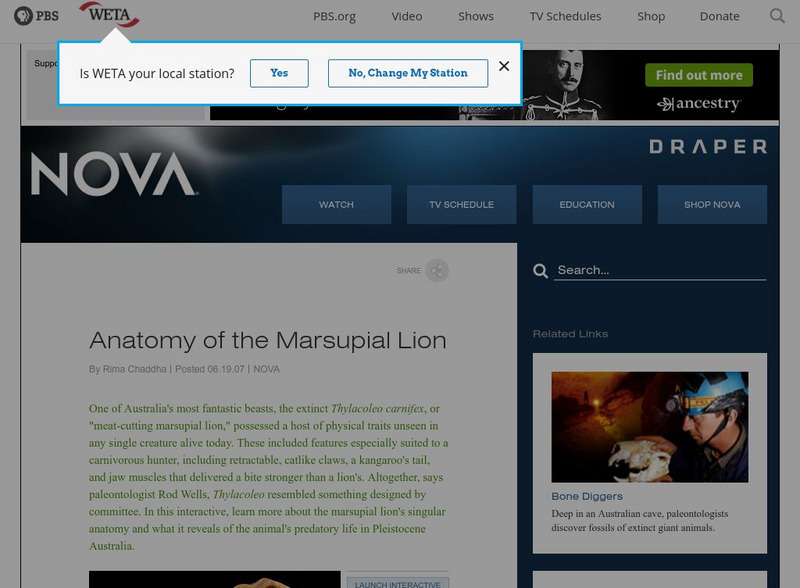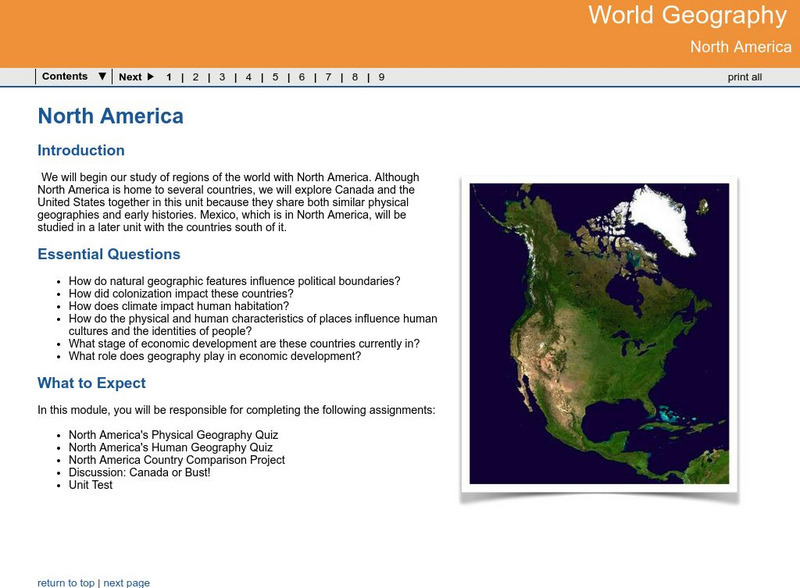Hi, what do you want to do?
Khan Academy
Khan Academy: Genetic Drift
Find out how evolution happens due to chance events. Explore the bottleneck effect and founder effect.
Concord Consortium
Concord Consortium: Stem Resources: The Virtual Field
A virtual lab that explores how offspring inherit different traits from their parents. Investigate these traits both in animals and plants. Understand that variations in offspring can lead to traits that allow survival. Lab includes...
University of California
Ucmp: Learning From the Fossil Record
Fossils provide scientists with clues about Earth's past. This site from the University of California's Museum of Paleontology is great for exploring lots of information on fossils.
BBC
Bbc News: The Unmasking of Piltdown Man
A BBC news feature explores a twentieth-century "scientific embarrassment." The Piltdown Man fossils, originally thought to present a link between apes and humans, were revealed to be forgeries forty years after being discovered. Find...
TED Talks
Ted: Ted Ed: Pruney Fingers: A Gripping Story
Why do fingers become pruney when they get wet? Mark Changizi examines the evolutionary reasons for pruney fingers, while exploring natural and manmade phenomena, like river networks, that operate similarly. [4:22]
Khan Academy
Khan Academy: Activity: The Tree of Life Infographic
An activity for students to explore an infograph to compare the similarities and differences between human and other species.
CK-12 Foundation
Ck 12: Life Science: 1.2 Fields in the Life Sciences
Explore some different areas of study in the life sciences.
City University of New York
Exploring Life: The First Cells
A brief essay about older and more recent ideas on when the first cells evolved. Good coverage of different scientific theories about the origin of life.
Other
Explore Learning: Natural Selection Gizmo
You are a bird hunting moths (both dark and light) that live on trees. As you capture the moths most easily visible against the tree surface, the moth populations change, illustrating the effects of natural selection. (Free usage is...
PBS
Pbs Teachers:how Did Humans Evolve?
Explore paleoanthropology by going on a virtual "dig" to answer questions about famous fossil finds. Explain how alternate hominid family trees result from different interpretations of the same fossil evidence.
PBS
Pbs Learning Media: What Killed the Dinosaurs?
This Evolution Web feature explores how evidence can support a variety of hypotheses surrounding the mystery behind the extinction of the dinosaurs.
PBS
Pbs Learning Media: Coral Reef Connections
Dive in and explore what makes this beautiful world so fragile. In this Web feature, from the PBS series "Evolution," discover how coevolution has shaped the ecological relationships among reef creatures.
Howard Hughes Medical Institute
Hhmi: Bio Interactive: Great Transitions Interactive
A Click and Learn that explores transitional fossils that provide key evidence for evolution. Use this slideshow to understand how small steps were required to make big evolutionary changes.
American Institute of Biological Sciences
Action Bioscience: The Sixth Extinction
Review the mass extinction events from the Earth's history. Then explore some ideas related to the concept that we are currently in the midst of the Earth's sixth major extinction.
PBS
Pbs: Queen Victoria's Empire (Lesson Plans)
Four lesson plans for exploring the reign of Queen Victoria, with instructions for introducing learners to the positive and negative impacts of the inventions of the Industrial Revolution, to the leaders of Victorian England, to the role...
PBS
Pbs the Life of Birds: Bills, Beaks and Food
This lesson plan explores how natural selection has influenced the development of features that contribute to successful feeding (bills, wings, talons, etc.), as well as identifying those characteristics that enable birds to obtain the...
Kinder Art
Kinder Art: Guitars as Sculpture (Lesson Plan)
Lesson plan on "Guitars as Sculpture." This is a lesson plan incorporating art, music and history. Explore the history of the guitar while making your own in a unique shape.
PBS
Pbs Teachers: Scientific American: Prime Time Primates: Monkey See, Monkey Do?
Explore the evolutionary advantage of stereoscopic vision and the fully opposable thumb, and describe how each adaptation might affect the use of tools in humans and primates.
Treehut
Suzy's World: Life on Earth
This site from Suzy's World, which is a personal site from Suzy Cato, explores what evolution is, and how long there has been life on earth. Content includes fun facts, a great experiment, and a classroom activity.
PBS
Nova: Bone Diggers: Anatomy of Thylacoleo
Thylacoleo or the extinct marsupial lion had an unusual array of adaptations that enabled it to be an effective predator. Explore an interactive fossil of the lion to learn more about each of its' adaptations.
TED Talks
Ted: Ted Ed: Vs Ramachandran: The Neurons That Shaped Civilization
Video explores the recent research and information on mirror neurons, which are thought to have influenced human evolution. [7:44] Includes a short quiz and a list of additional resources to explore.
Georgia Department of Education
Ga Virtual Learning: World Geog: North America: The United States and Canada
World Geography learning module on the United States and Canada explores similarities and differences in the population, climate, resources and evolution of the two countries.
Georgia Department of Education
Ga Virtual Learning: World History: The Renaissance and Protestant Reformation
Comprehensive learning module on Renaissance and Reformation explores its evolution, culture, contirbutions and conflict. Complete set of multi-media course resources.
Other
Object of History: Guide to Doing History With Objects
Explore the dimensions of America's rich history by taking a detailed look at objects from our past. Examine stories, important moments, and the evolution of the American people via primary documents, photos, and other artifacts.














